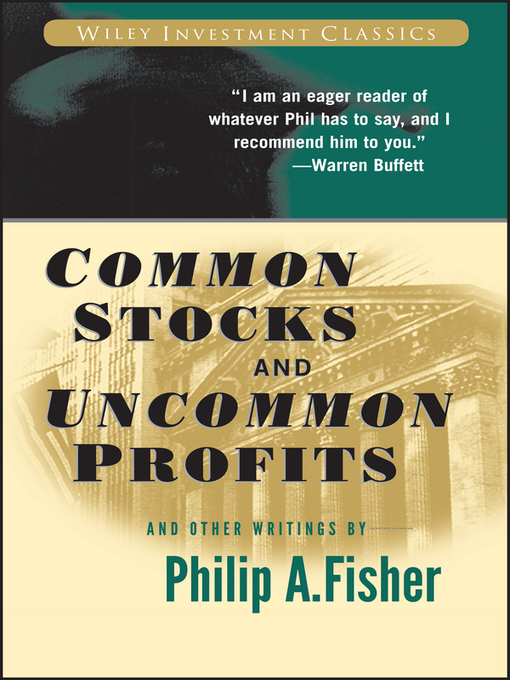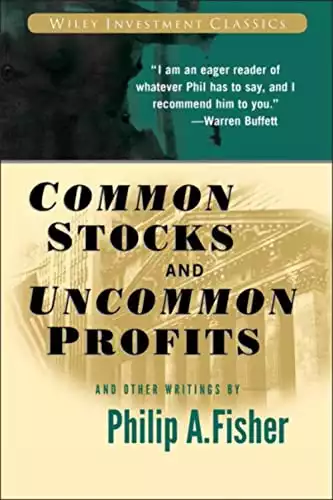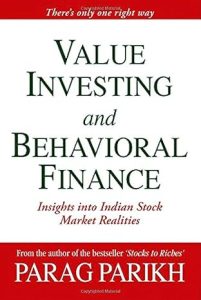- Book Title: Common Stocks and Uncommon Profits
- Author: Philip A. Fisher
- Publication Date: 1958
Introduction
Common Stocks and Uncommon Profits, written by Philip A. Fisher, is a landmark work in the field of investment literature. Published in 1958, this book has profoundly influenced the world of finance, particularly in the area of qualitative investment analysis. Fisher, a renowned investment analyst and portfolio manager, presents a comprehensive approach to stock selection that goes beyond mere numbers. His emphasis on understanding the qualitative aspects of a company—such as management quality, competitive advantages, and growth potential—offers a unique perspective that complements traditional quantitative analysis.
For finance professionals, Fisher's insights are invaluable. His methodologies, including the famous "scuttlebutt" method, provide practical tools for identifying high-quality investments with strong growth prospects. As the financial landscape evolves, the principles outlined in Common Stocks and Uncommon Profits remain relevant, making it a crucial read for those looking to deepen their understanding of investment strategies and enhance their decision-making processes.
Content Summary
Key Concepts
- Qualitative Investment Analysis: Fisher emphasizes the importance of qualitative factors in stock selection. Unlike traditional approaches that focus solely on financial metrics, Fisher advocates for a comprehensive understanding of a company's management, operations, and competitive environment.
- The "Scuttlebutt" Method: This unique approach involves gathering information from various sources, such as suppliers, customers, and competitors, to form a holistic view of a company's potential. Fisher believes that this method provides insights that are not readily apparent in financial statements.
- Growth Investing: Fisher focuses on identifying companies with substantial growth potential. He argues that investing in well-managed companies with strong growth prospects can yield significant long-term returns.
Core Topics
- Fifteen Points to Look for in a Common Stock: Fisher outlines fifteen criteria that investors should consider when evaluating potential investments. These points cover aspects such as the company's research and development capabilities, profit margins, and sales organization.
- Management's Role: Fisher stresses the importance of strong, capable management in driving a company's success. He highlights qualities such as integrity, vision, and the ability to manage growth effectively.
- Long-Term Investments: Fisher advocates for a long-term investment strategy, arguing that holding investments for extended periods allows investors to fully benefit from a company's growth. He cautions against the pitfalls of short-term speculation and market timing.
By combining these elements, Fisher presents a robust framework for stock selection that prioritizes quality and growth potential. His focus on thorough research and understanding of a company's fundamentals provides a valuable counterpoint to purely quantitative approaches, making Common Stocks and Uncommon Profits a timeless resource for finance professionals.
Critical Analysis
Strengths
- Unique Insights into Qualitative Analysis:
- One of the most significant strengths of Common Stocks and Uncommon Profits is Fisher's emphasis on qualitative analysis. By focusing on aspects such as management quality, company culture, and market position, Fisher provides a more holistic view of a company's potential. This approach complements traditional quantitative methods and helps investors identify stocks that may not be immediately attractive based on financial metrics alone.
- Practical Advice and Real-World Examples:
- Fisher's advice is grounded in practical experience. He shares real-world examples that illustrate his points, making complex concepts accessible and actionable. This practical orientation helps readers apply Fisher's principles to their own investment decisions, enhancing their ability to identify high-potential stocks.
- Emphasis on Thorough Research:
- Fisher's advocacy for thorough research, particularly through the "scuttlebutt" method, underscores the importance of gathering comprehensive information. By encouraging investors to look beyond financial statements and engage with various stakeholders, Fisher promotes a deeper understanding of a company's true potential.
- Long-Term Investment Perspective:
- Fisher's long-term perspective is another notable strength. In an era where short-term trading and speculation often dominate, his advice to focus on long-term growth is both refreshing and prudent. This approach helps investors avoid the pitfalls of market timing and capitalize on sustained company performance.
Weaknesses
- Dated Examples and Context:
- Although the principles in Common Stocks and Uncommon Profits are timeless, some of the examples and contexts may feel dated to contemporary readers. The financial markets have evolved significantly since the book's publication, and some of Fisher's specific references may not resonate as strongly with today's audience.
- Focus on Growth Stocks:
- Fisher's primary focus on growth stocks may not appeal to all investors, particularly those with a preference for value investing or income-generating investments. While his methods are highly effective for identifying growth opportunities, they may not provide as much guidance for those seeking stable, dividend-paying stocks.
Comparative Analysis
- Comparison with Benjamin Graham's Value Investing Principles:
- Philip Fisher's approach contrasts with Benjamin Graham's value investing principles as outlined in The Intelligent Investor. While Graham emphasizes quantitative analysis and the concept of "margin of safety," Fisher focuses on qualitative factors and growth potential. Both approaches offer valuable insights, but Fisher's methods provide a useful counterpoint to Graham's more conservative, value-oriented strategies.
- Relevance to Modern Investment Techniques:
- In the context of modern quantitative analysis techniques, Fisher's emphasis on qualitative factors remains relevant. While quantitative methods, such as algorithmic trading and data-driven analysis, dominate contemporary finance, Fisher's approach highlights the importance of understanding the human and strategic elements of a company. This blend of qualitative and quantitative analysis can lead to more informed investment decisions.
By examining these strengths and weaknesses, it's clear that Common Stocks and Uncommon Profits offers valuable insights that are both timeless and applicable to modern investing. Fisher's focus on qualitative analysis and long-term growth provides a unique and complementary perspective to other investment strategies, making it an essential read for finance professionals.
Notable Quotes
- "The stock market is filled with individuals who know the price of everything, but the value of nothing."
- This quote emphasizes the importance of understanding the intrinsic value of a stock rather than just its market price.
- "Conservative investors sleep well."
- Fisher highlights the peace of mind that comes with making prudent and well-researched investment decisions.
- "The greatest investment advisor of the century, Benjamin Graham, taught me that there are two rules of investing. The first rule: Don’t lose. The second rule: Don’t forget rule number one."
- A powerful reminder of the importance of capital preservation in investing.
- "In a conservative approach to common stocks, the first and most important attribute to look for is a superior product or service that will ensure a company's growth."
- Fisher underlines the need for a company to have a competitive edge to ensure long-term success.
- "Investors have been so oversold on diversification that fear of having too many eggs in one basket has caused them to put far too little into companies that can grow and prosper."
- This quote challenges the conventional wisdom of diversification, suggesting that over-diversification can limit potential gains.
- "If the job has been correctly done when a common stock is purchased, the time to sell it is almost never."
- Fisher advocates for a long-term investment strategy, where stocks are held indefinitely as long as the original investment thesis remains intact.
- "The wise investor can profit if he can think independently of the crowd and reach the rich answer when the majority of financial opinion is leaning the other way."
- This quote encourages independent thinking and contrarian investment strategies.
- "An investment operation is one which, upon thorough analysis, promises safety of principal and a satisfactory return."
- Fisher reiterates the core principles of sound investing: thorough analysis, safety of principal, and satisfactory returns.
These quotes capture the essence of Philip Fisher's investment philosophy, emphasizing the importance of long-term thinking, thorough analysis, and the value of superior products and services in successful investing.
Conclusion
Summary: Common Stocks and Uncommon Profits by Philip A. Fisher is a seminal work that continues to be a cornerstone in the field of investment literature. Fisher’s emphasis on qualitative analysis and long-term growth investing offers a unique and invaluable perspective that complements traditional quantitative approaches. Through practical advice, detailed criteria for stock selection, and the innovative "scuttlebutt" method, Fisher provides finance professionals with robust tools for identifying high-potential investments.
Recommendation: For finance professionals looking to enhance their investment strategies, Common Stocks and Uncommon Profits is a must-read. Fisher’s insights into qualitative analysis and his focus on the importance of understanding a company’s management, operations, and market position are crucial for making informed investment decisions. Despite some dated examples, the core principles of the book remain highly relevant and applicable to today's financial markets.
Final Thoughts: Philip A. Fisher’s work stands out for its timeless wisdom and practical applicability. While the financial landscape has evolved significantly since the book’s publication, the foundational concepts of thorough research, qualitative assessment, and long-term investment perspective remain pertinent. Fisher’s approach serves as a valuable complement to modern quantitative methods, offering a holistic view that can significantly enhance an investor's ability to make sound decisions. Overall, Common Stocks and Uncommon Profits is highly recommended for both novice and experienced finance professionals seeking to deepen their understanding of stock selection and growth investing.






